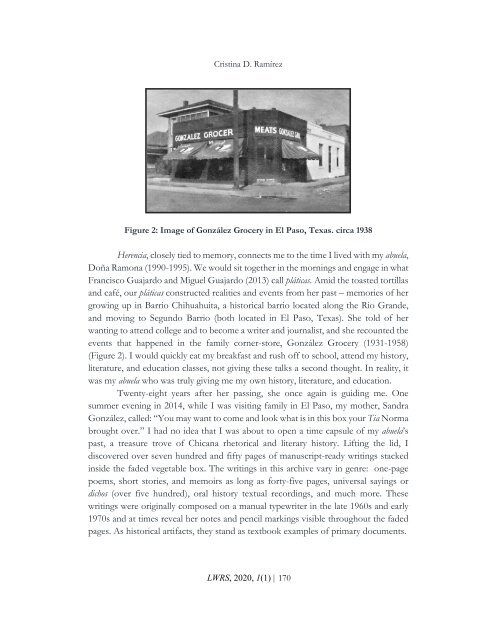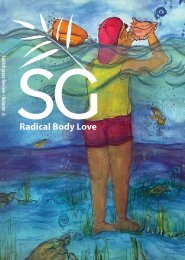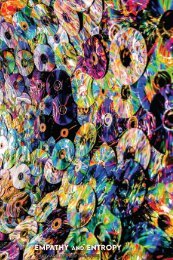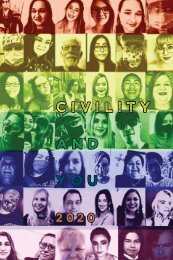LWRS June 2020 Volume 1, Issue 1
Inaugural Issue co-edited by Yndalecio Isaac Hinojosa and Isabel Baca
Inaugural Issue co-edited by Yndalecio Isaac Hinojosa and Isabel Baca
You also want an ePaper? Increase the reach of your titles
YUMPU automatically turns print PDFs into web optimized ePapers that Google loves.
Cristina D. Ramírez<br />
Figure 2: Image of González Grocery in El Paso, Texas. circa 1938<br />
Herencia, closely tied to memory, connects me to the time I lived with my abuela,<br />
Doña Ramona (1990-1995). We would sit together in the mornings and engage in what<br />
Francisco Guajardo and Miguel Guajardo (2013) call pláticas. Amid the toasted tortillas<br />
and café, our pláticas constructed realities and events from her past – memories of her<br />
growing up in Barrio Chihuahuita, a historical barrio located along the Rio Grande,<br />
and moving to Segundo Barrio (both located in El Paso, Texas). She told of her<br />
wanting to attend college and to become a writer and journalist, and she recounted the<br />
events that happened in the family corner-store, González Grocery (1931-1958)<br />
(Figure 2). I would quickly eat my breakfast and rush off to school, attend my history,<br />
literature, and education classes, not giving these talks a second thought. In reality, it<br />
was my abuela who was truly giving me my own history, literature, and education.<br />
Twenty-eight years after her passing, she once again is guiding me. One<br />
summer evening in 2014, while I was visiting family in El Paso, my mother, Sandra<br />
González, called: “You may want to come and look what is in this box your Tia Norma<br />
brought over.” I had no idea that I was about to open a time capsule of my abuela’s<br />
past, a treasure trove of Chicana rhetorical and literary history. Lifting the lid, I<br />
discovered over seven hundred and fifty pages of manuscript-ready writings stacked<br />
inside the faded vegetable box. The writings in this archive vary in genre: one-page<br />
poems, short stories, and memoirs as long as forty-five pages, universal sayings or<br />
dichos (over five hundred), oral history textual recordings, and much more. These<br />
writings were originally composed on a manual typewriter in the late 1960s and early<br />
1970s and at times reveal her notes and pencil markings visible throughout the faded<br />
pages. As historical artifacts, they stand as textbook examples of primary documents.<br />
<strong>LWRS</strong>, <strong>2020</strong>, 1(1) | 170





